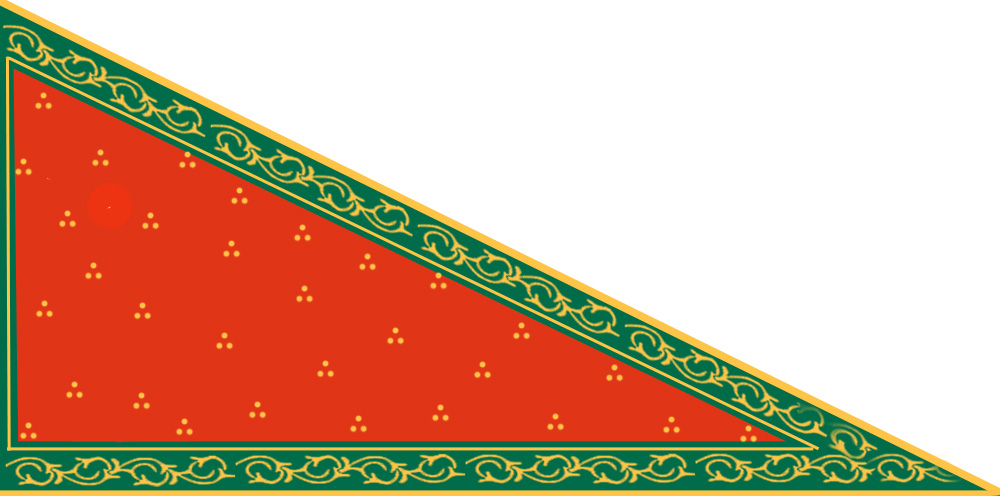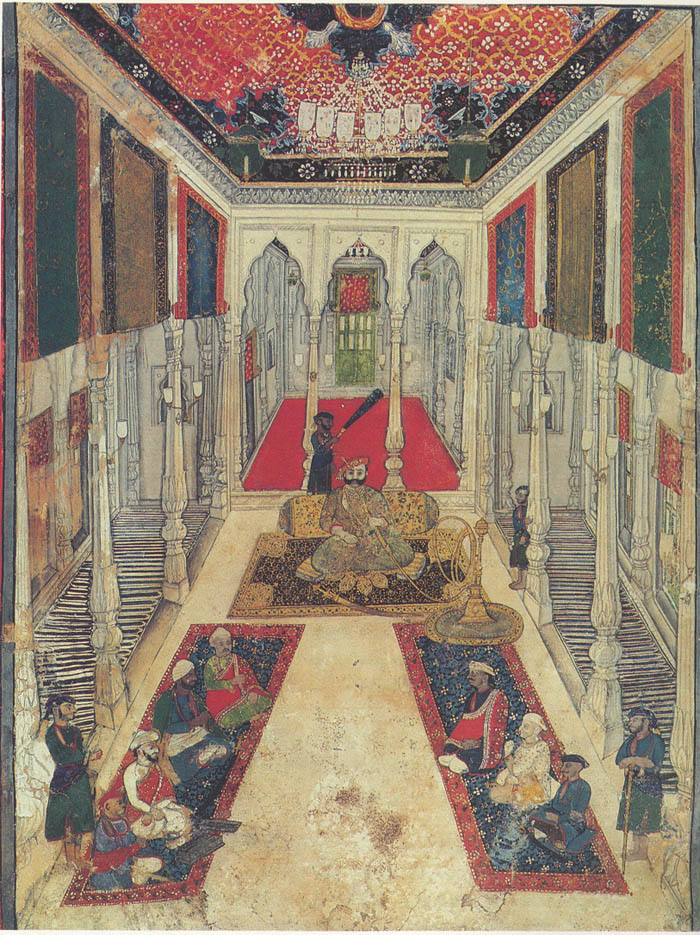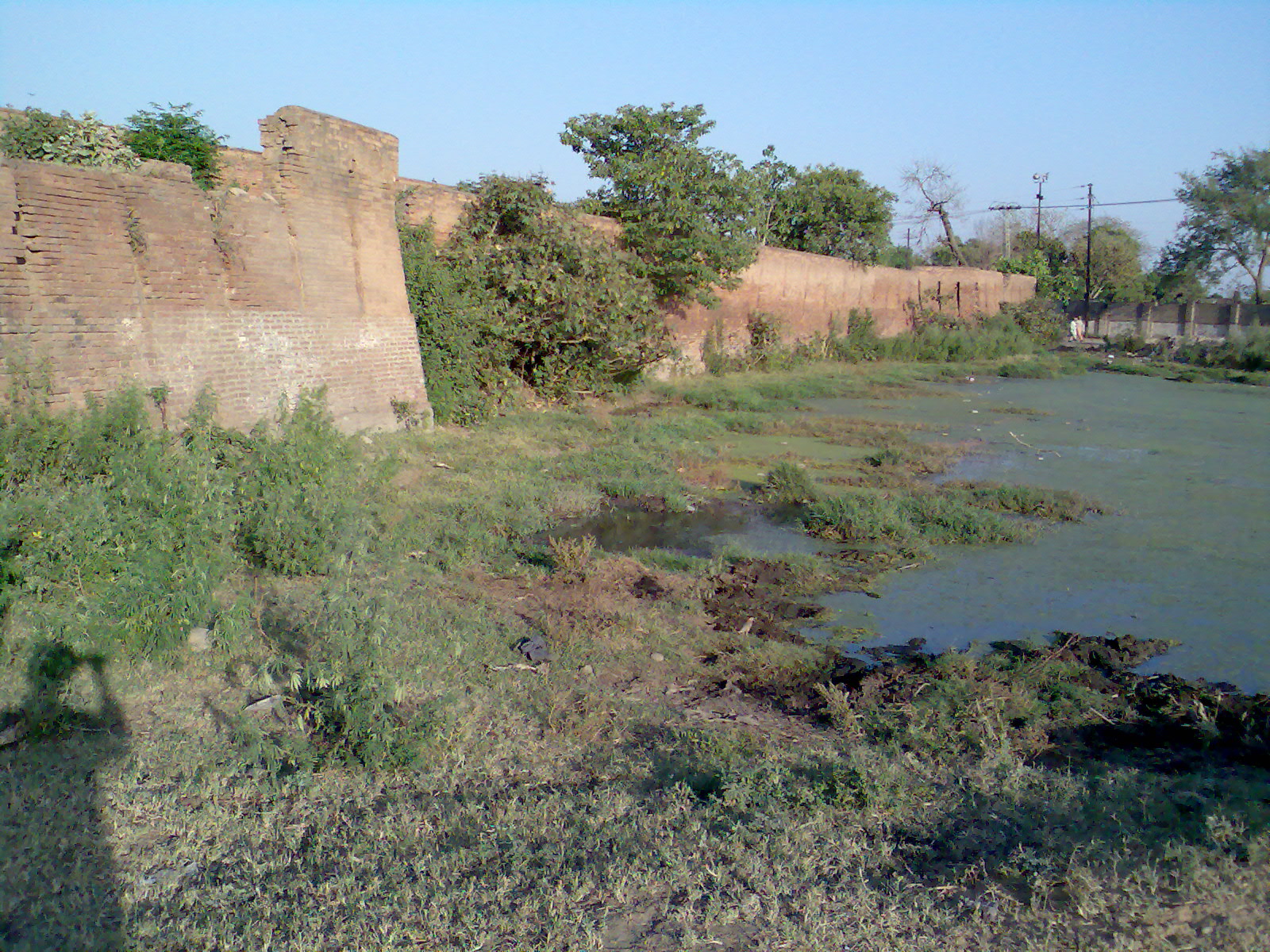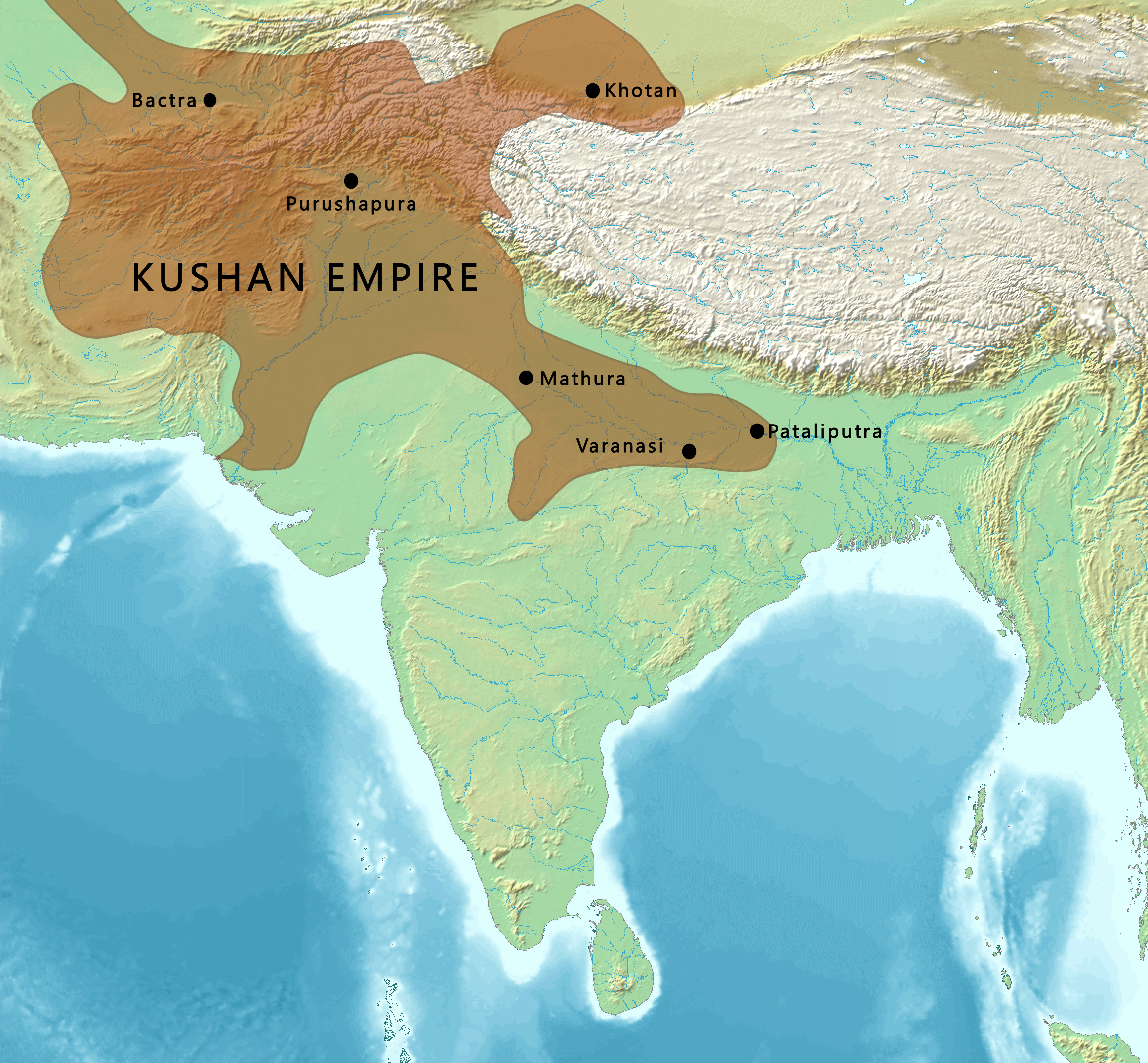|
Battle Of Attock
The Battle of Attock (also known as the Battle of Chuch or the Battle of Haidru) took place on 13 July 1813 between the Sikh Empire and the Durrani Empire. The battle was the first significant Sikh victory over the Durranis. Background In 1811–12, Ranjit Singh invaded the hill states of Bhimber, Rajauri, and Kullu in preparation for an invasion of Kashmir. In late 1812, Fateh Khan, the Vizier of Kabul, crossed the Indus river under orders from Mahmud Shah Durrani to raid Kashmir and to free Shuja Shah Durrani from its renegade vizier, Atta Muhammad Khan. In an 1812 interview with Ranjit Singh, Fateh Khan agreed to a joint invasion of Kashmir. He could not invade Kashmir if he was opposed by the Sikh Empire, and agreed that a small Sikh force under Dewan Mokham Chand Kochhar would receive one third of the plunder. Both invasions began at Jhelum, but once the armies reached the Pir Panjal Range, Fateh Khan used a heavy snowfall to double march his veteran mountain troop ... [...More Info...] [...Related Items...] OR: [Wikipedia] [Google] [Baidu] |
Afghan–Sikh Wars
The Afghan–Sikh wars spanned from 1748 to 1837 in the Indian subcontinent, and saw multiple phases of fighting between the Durrani Empire and the Sikh Empire (and its predecessors), mainly in and around Punjab region. The conflict's origins stemmed from the days of the Dal Khalsa (Sikh Army), Dal Khalsa, and continued after the Emirate of Afghanistan, Emirate of Kabul succeeded the Durrani Empire. __TOC__ Background The Sikh Confederacy had effectively achieved independence from the Mughal Empire in 1716, and expanded at its expense in the following decades, despite the Chhota Ghallughara. The Afsharid dynasty, Afsharid Persians, Persian emperor Nader Shah's invasion of the Mughal Empire (1738–40) dealt a heavy blow to the Mughals, but after Nader Shah's death in 1747, Ahmed Shah Abdali, the founder of the Durrani Empire declared independence from Iran, Persia. Four years later, this new Afghan state came into conflict with the Sikh alliance. Campaigns of Ahmad Shah A ... [...More Info...] [...Related Items...] OR: [Wikipedia] [Google] [Baidu] |
Kullu
Kullu () is a municipal council town that serves as the administrative headquarters of the Kullu district of the Indian state of Himachal Pradesh. It is located on the banks of the Beas River in the Kullu Valley about north of the airport at Bhuntar, Kullu. Kullu Valley is a broad open valley formed by the Beas River between Manali and Larji. This valley is known for its temples and its hills covered with pine and deodar forest and sprawling apple orchards. The course of the Beas river, originating from Beas Kund presents a succession of hillside settlements studded amongst forests of deodar that tower above pine trees on the lower rocky ridges. Together with the river Beas running through the valley, the town of Kullu offers truly magnificent views. Kullu Valley is sandwiched between the Pir Panjal, Lower Himalayan and Great Himalayan Ranges, located in Northern India, 497 k.m. away from the capital of India. History Historical references about the Kullu valley dat ... [...More Info...] [...Related Items...] OR: [Wikipedia] [Google] [Baidu] |
Valley Of Kashmir
The Kashmir Valley, also known as the Vale of Kashmir, is an intermontane valley in northern Jammu and Kashmir, a region in Indian-administered Kashmir.(a) (subscription required) Quote: "Kashmir, region of the northwestern Indian subcontinent ... has been the subject of dispute between India and Pakistan since the partition of the Indian subcontinent in 1947. The northern and western portions are administered by Pakistan and comprise three areas: Azad Kashmir, Gilgit, and Baltistan, the last two being part of a territory called the Northern Areas. Administered by India are the southern and southeastern portions, which constitute the state of Jammu and Kashmir but are slated to be split into two union territories. China became active in the eastern area of Kashmir in the 1950s and has controlled the northeastern part of Ladakh (the easternmost portion of the region) since 1962."; (b) C. E Bosworth, University of Manchester Quote: "KASHMIR, kash'mer, the northernmost region ... [...More Info...] [...Related Items...] OR: [Wikipedia] [Google] [Baidu] |
Jagir
A jagir (), ( Hindustani: जागीर/جاگیر, ''Jāgīr''), ( Marathi: जहागीर, ''Jahāgīrá'') also spelled as jageer, was a type of feudal land grant in the Indian subcontinent at the foundation of its Jagirdar ( Zamindar) system. It developed during the Islamic era of the Indian subcontinent, starting in the early 13th century, wherein the powers to govern and collect tax from an estate was granted to an appointee of the state. 13th-century origin and successors This feudal system of land ownership is referred to as the ''jagirdar'' system. The system was introduced by the Sultans of Delhi from the 13th century onwards, was later adopted by the Mughal Empire, the Maratha Empire and continued under the British East India Company. Some Hindu jagirdars were converted into Muslim vassal states under Mughal imperial sway, such as the nawabs of Kurnool. Most princely states of India during the colonial British Raj era were jagirdars such as Mohrampur Jagi ... [...More Info...] [...Related Items...] OR: [Wikipedia] [Google] [Baidu] |
Raja
Raja (; from , IAST ') is a noble or royal Sanskrit title historically used by some Indian subcontinent, Indian rulers and monarchs and highest-ranking nobles. The title was historically used in the Indian subcontinent and Southeast Asia. The title has a long history in South Asia and History of Southeast Asia, Southeast Asia, being attested from the ''Rigveda'', where a ' is a Rigvedic tribes, ruler, see for example the Battle of the Ten Kings, ', the "Battle of Ten Kings". The title has equivalent cognates in other Indo-European languages, notably the Latin Rex (title), Rex and the Celtic languages, Celtic Rix. Raja-ruled Indian states While most of the British Raj, Indian salute states (those granted a Salute#Heavy arms: gun salutes, gun salute by the The Crown, British Crown) were ruled by a Maharaja (or variation; some promoted from an earlier Raja- or equivalent style), even exclusively from 13 guns up, a number had Rajas: ; Hereditary salutes of 11-guns : * the R ... [...More Info...] [...Related Items...] OR: [Wikipedia] [Google] [Baidu] |
Pir Panjal Range
The Pir Panjal Range ( ; ) is a range of mountains in the Lower Himalayan region located in the Western Himalayas of northern Indian subcontinent. It runs southeast to northwest between the Beas and Neelam/Kishanganga rivers, in the Indian state of Himachal Pradesh and Indian-administered union territory of Jammu and Kashmir, with its northwestern end extending into territory administered by Pakistan. The Himalayas show a gradual elevation towards the Dhauladhar and Pir Panjal ranges. Pir Panjal is the largest and westernmost range of the Lesser Himalayas. Near the bank of the Sutlej River, it dissociates itself from the main Himalayan range and forms a divide between the Beas and Ravi rivers on one side and the Chenab on the other. Further west, the Pir Panjal range forms the southwestern boundary of the Kashmir Valley, separating it from the hills of Jammu region, forming a divide between the Jhelum and Chenab rivers. Etymology The Pir Panjal range is named after ... [...More Info...] [...Related Items...] OR: [Wikipedia] [Google] [Baidu] |
Jhelum
Jhelum (; , ) is a city, located along the western bank of the Jhelum River, in Punjab, Pakistan. It is the 21st largest city in Punjab and 31st largest in Pakistan, by population. Located in northern Punjab, it serves as the capital of the eponymous district; and is often referred to as the 'City of Soldiers' or 'Land of Martyrs and Warriors', due to the inclusion of many soldiers from the city in the British Indian Army and, later, the Pakistan Armed Forces; owing to the categorisation of the Punjabi tribes as a ' martial race'. Jhelum is a few miles upstream from the site of the ancient Battle of the Hydaspes, between the armies of Alexander III of Macedon and Porus. The site of the modern city of Jhelum could have, possibly, been the capital of Porus' Kingdom, Paurava. A city called Bucephala was founded nearby to commemorate the death of Alexander's horse, Bucephalus. Other notable sites nearby include the 16th-century Rohtas Fort, the Tilla Jogian complex o ... [...More Info...] [...Related Items...] OR: [Wikipedia] [Google] [Baidu] |
Vizier
A vizier (; ; ) is a high-ranking political advisor or Minister (government), minister in the Near East. The Abbasids, Abbasid caliphs gave the title ''wazir'' to a minister formerly called ''katib'' (secretary), who was at first merely a helper but afterwards became the representative and successor of the ''dapir'' (official scribe or secretary) of the Sasanian Empire, Sassanian kings. In modern usage, the term has been used for government Minister (government), ministers in much of the Middle East and beyond. Several alternative spellings are used in English, such as ''vizir'', ''wazir'', and ''vezir''. Etymology Vizier may be derived from the Arabic ''wazara'' (), from the Semitic root ''W-Z-R''. The word is mentioned in the Quran, where Aaron is described as the ''wazir'' (helper) of Moses, as well as the word ''wizr'' (burden) which is also derived from the same root. It was later adopted as a title, in the form of ''wazīr āl Muḥammad'' () by the proto-Shi'a leaders ... [...More Info...] [...Related Items...] OR: [Wikipedia] [Google] [Baidu] |
Shuja Shah Durrani
Shuja (, , ) is a surname and male given name. Notable people with this name include: * Shuja al-Khwarazmi, was the mother of Abbasid caliph Al-Mutawakkil Ja'far ibn al-Mu'tasim, Muḥammad ibn Harun al-Rashid, Hārūn al-Mutawakkil ʿalā Allāh (); March 82211 December 861, commonly known by his laqab, regnal name al-Mutawwakil ala Allah (), was the tenth Abbasid Caliphate, Abbasid caliph, rul ... (r. 847–861) * Ahmad Shuja Pasha (born 1952), Pakistani general * Badruddoza Ahmed Shuja, Bangladeshi politician * Hakim Ahmad Shuja (1893–1969) * Kashif Shuja (born 1979), Pakistani squash player * Mian Mujtaba Shuja-ur-Rehman, Pakistani politician * Shah Shuja (Mughal prince) (1616–1661) * Shah Shujah Durrani (1785–1842) * Shakir Shuja Abadi * Shuja Haider, Pakistani musician * Shuja Haider (cricketer) (born 1994), Pakistani cricket player * Shuja Khanzada (1943–2015), Pakistani politician and colonel * Shuja ud-Din (born 1913), Afghan field hockey player ... [...More Info...] [...Related Items...] OR: [Wikipedia] [Google] [Baidu] |
Mahmud Shah Durrani
Mahmud Shah Durrani (Pashto/ Persian: ); 1769 – 18 April 1829) was born prince and later ruler of the Durrani Empire (Afghanistan) between 1801 and 1803, and again between 1809 and 1818. From 1818 to 1829 he was the ruler of Herat. From an ethnic Sadduzai tribe section of the Popalzai sub-clan of the Durrani Pashtuns, he was the son of Timur Shah Durrani and grandson of Ahmad Shah Durrani. Reign Mahmud Shah Durrani was the half-brother of his predecessor, Zaman Shah. On July 25, 1801, Zaman Shah was deposed, and Mahmud Shah ascended to ruler-ship. He had a chequered career, being deposed in 1803, restored in 1809, and finally deposed again in 1818. Struggles with the Barakzais The elder brother of Dost Mohammad Khan, the chief of the Barakzai, Fateh Khan, took an important part in raising Mahmud Shah Durrani to the sovereignty of Afghanistan in 1800 and in restoring him to the throne in 1809. The son of Mahmud Shah Durrani, Shahzada Kamran Durrani, was always in trouble w ... [...More Info...] [...Related Items...] OR: [Wikipedia] [Google] [Baidu] |
Indus River
The Indus ( ) is a transboundary river of Asia and a trans-Himalayas, Himalayan river of South Asia, South and Central Asia. The river rises in mountain springs northeast of Mount Kailash in the Western Tibet region of China, flows northwest through the disputed Kashmir region, first through the Indian-administered Ladakh, and then the Pakistani administered Gilgit Baltistan, Quote: "Kashmir, region of the northwestern Indian subcontinent. It is bounded by the Uygur Autonomous Region of Xinjiang to the northeast and the Tibet Autonomous Region to the east (both parts of China), by the Indian states of Himachal Pradesh and Punjab to the south, by Pakistan to the west, and by Afghanistan to the northwest. The northern and western portions are administered by Pakistan and comprise three areas: Azad Kashmir, Gilgit, and Baltistan, ... The southern and southeastern portions constitute the Indian state of Jammu and Kashmir. The Indian- and Pakistani-administered portions are divi ... [...More Info...] [...Related Items...] OR: [Wikipedia] [Google] [Baidu] |
Kabul
Kabul is the capital and largest city of Afghanistan. Located in the eastern half of the country, it is also a municipality, forming part of the Kabul Province. The city is divided for administration into #Districts, 22 municipal districts. A 2025 estimate puts the city's population at 7.175 million. In contemporary times, Kabul has served as Afghanistan's political, cultural and economical center. Rapid urbanisation has made it the country's primate city and one of the largest cities in the world. The modern-day city of Kabul is located high in a narrow valley in the Hindu Kush mountain range, and is bounded by the Kabul River. At an elevation of , it is one of the List of capital cities by elevation, highest capital cities in the world. The center of the city contains its old neighborhoods, including the areas of Khashti Bridge, Khabgah, Kahforoshi, Saraji, Chandavel, Shorbazar, Deh-Afghanan and Ghaderdiwane. Kabul is said to be over 3,500 years old, and was mentioned at the ... [...More Info...] [...Related Items...] OR: [Wikipedia] [Google] [Baidu] |






